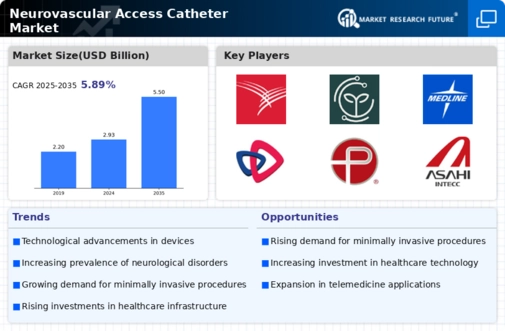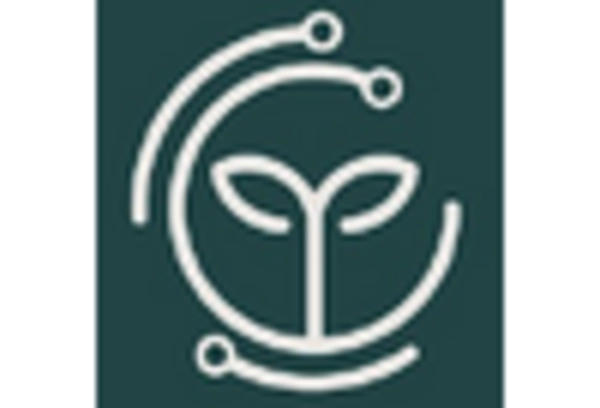Focus on Minimally Invasive Procedures
The shift towards minimally invasive procedures is reshaping the Neurovascular Access Catheter Market. Healthcare professionals increasingly prefer techniques that reduce patient recovery time and minimize complications. Neurovascular access catheters are integral to these procedures, allowing for targeted interventions with less trauma to surrounding tissues. The market is witnessing a growing adoption of these catheters in various applications, including thrombectomy and embolization. This trend is supported by clinical evidence suggesting that minimally invasive approaches lead to better patient outcomes and shorter hospital stays. As a result, the demand for neurovascular access catheters is expected to rise, with market analysts estimating a growth rate of around 7% annually as more healthcare facilities adopt these innovative techniques.
Rising Incidence of Neurovascular Disorders
The increasing prevalence of neurovascular disorders, such as stroke and aneurysms, is a primary driver for the Neurovascular Access Catheter Market. According to recent data, the incidence of stroke is expected to rise significantly, with projections indicating that by 2030, the number of stroke cases could reach 23 million annually. This alarming trend necessitates the use of neurovascular access catheters for timely interventions. As healthcare systems strive to improve patient outcomes, the demand for effective and reliable access devices is likely to escalate. Furthermore, the aging population is particularly susceptible to these disorders, further amplifying the need for advanced neurovascular solutions. Consequently, the market is poised for substantial growth as healthcare providers seek to address this pressing public health challenge.
Technological Advancements in Catheter Design
The Neurovascular Access Catheter Market is experiencing a surge in technological advancements that enhance the efficacy and safety of procedures. Innovations such as advanced materials and design improvements are leading to catheters that are more flexible and easier to navigate through complex vascular pathways. These advancements not only improve patient outcomes but also reduce procedural times, which is critical in emergency situations. The introduction of smart catheters equipped with sensors for real-time monitoring is also gaining traction. This technology allows for better tracking of catheter placement and function, potentially reducing complications. As a result, the market is projected to grow at a compound annual growth rate of approximately 6.5% over the next five years, driven by these technological innovations.
Increased Investment in Healthcare Infrastructure
Investment in healthcare infrastructure is a significant driver for the Neurovascular Access Catheter Market. Governments and private entities are channeling resources into enhancing healthcare facilities, particularly in regions with high incidences of neurovascular conditions. This investment is not only aimed at expanding access to care but also at upgrading medical technologies, including neurovascular access catheters. Enhanced healthcare infrastructure facilitates the adoption of advanced medical devices, thereby improving patient care. Furthermore, as hospitals and clinics modernize their equipment, the demand for state-of-the-art neurovascular access catheters is likely to increase. This trend is expected to contribute to a robust market growth trajectory, with estimates suggesting a potential increase in market size by over 10% in the coming years.
Growing Awareness and Education on Neurovascular Health
The rising awareness and education regarding neurovascular health are pivotal in driving the Neurovascular Access Catheter Market. Public health campaigns and educational initiatives are informing patients and healthcare providers about the importance of early detection and treatment of neurovascular disorders. This heightened awareness is leading to increased screening and diagnostic procedures, which in turn drives the demand for neurovascular access catheters. As more individuals recognize the symptoms and risks associated with neurovascular conditions, they are more likely to seek medical attention promptly. Consequently, healthcare providers are equipping themselves with the necessary tools, including advanced catheters, to meet this growing demand. The market is expected to benefit from this trend, with projections indicating a steady increase in catheter utilization as awareness continues to expand.


















Leave a Comment